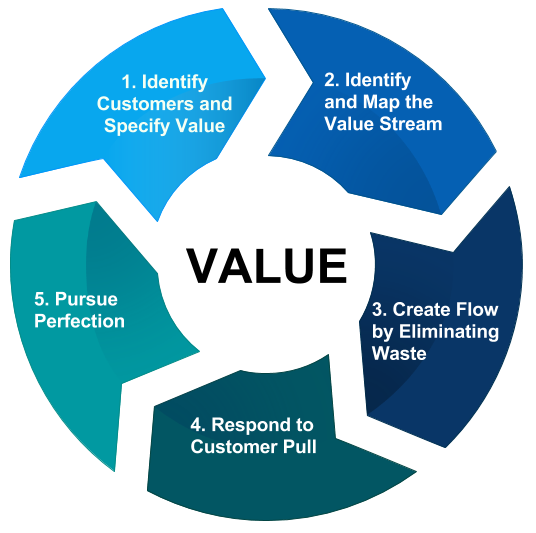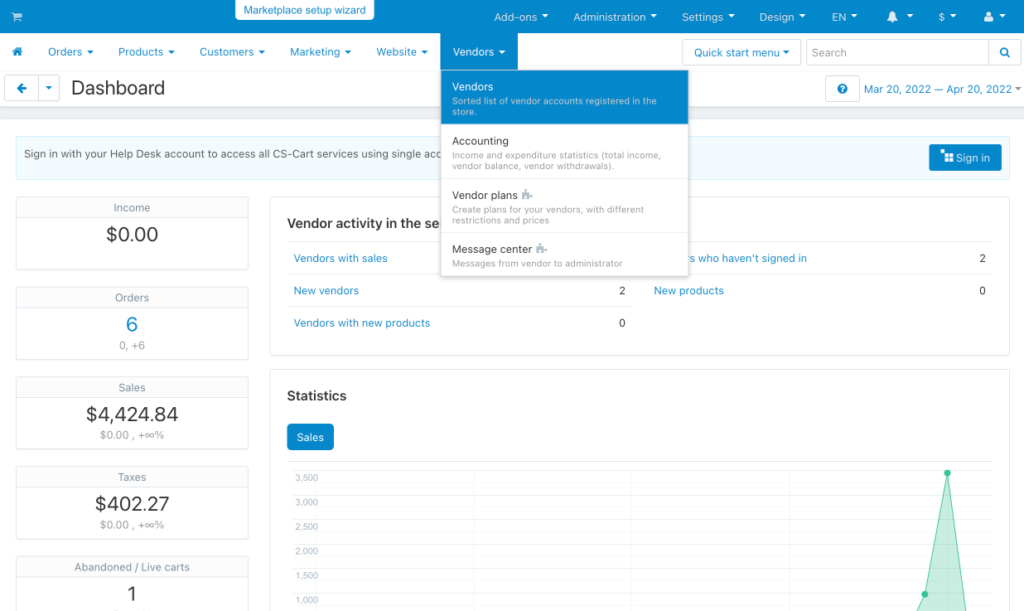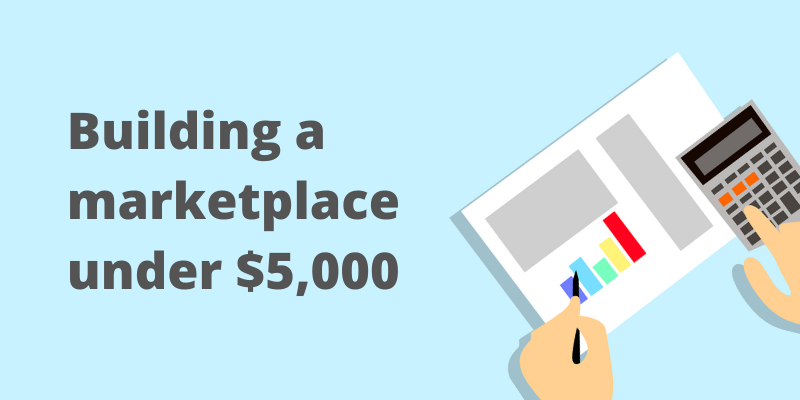How to Launch Marketplace Under $5,000
There are two common ways people do eCommerce business: they either start an online shop or a marketplace. Normally people know two-three large marketplaces—those that they use themselves. Most likely they would name Amazon, eBay, and Facebook Marketplace.
It is normal that entrepreneurs are looking for how to launch a competitive marketplace without large investments so that it is guaranteed to generate income. Most marketplaces are not as popular as those listed above, however, they are very profitable.
In this article, we analyze how to create a marketplace from the financial point of view, how much are prices for development and launching a marketplace. Our goal is to help our readers at the stage of budgeting and planning expenses, so that entrepreneurs could have a clear picture of future spendings.
Whom marketplaces up to $5,000 are suitable for
1. For start-ups of any level. Young entrepreneurs should remember that any of today’s major players in the market are yesterday’s startups. At first, these marketplaces were quite small, and only after years of development and expansion, they were able to reach this level. Take Amazon: Bezos started it as a small online book store in his garage.
2. For small local websites whose services or products do not imply a strong expansion. Some types of businesses cover a very narrow audience, but have, for example, a high average bill. They do not need to have a wide range of marketplace features—customers already know why they are turning to this partner.
3. For testing business ideas. Testing a business model is very important in the early stages. It will help to remove irrelevant ideas and confirm successful hypotheses.
How to save on development?
Choice of development
Low-code or no-code. Obviously, development is usually the most expensive part of starting an eСommerce business. For a test or a start, cloud no-code platforms are good, where a lot of investments are not required to create a marketplace. In most cases, they are intuitive and even an inexperienced user will be able to create a site on their own. It should be mentioned that a no-code platform is not suitable for the development of a full-fledged marketplace—there are not enough functions and power. But as a temporary solution or MVP testing it may be very suitable.
Uniqueness and brand building
The larger the project, the more investments you’ll need. It requires large budgets and it is extremely difficult to cope with this at the start. Brand building, nicheing and localization can help. It is worth consciously limiting the range of assortment, target audience and territory of serving. You can gradually increase each of the spheres.
Smart approach
There are a lot of project management methodologies applicable to business: Agile with its Scrum and Kanban, Lean approach, and so on. We suggest you familiarize yourself with the latter method. Lean production is an robust approach to managing an organization. Its purpose is to improve the quality of work by reducing waste-time processes. This approach extends to all aspects of activity—from design and production, to product marketing. In terms of marketplaces, it is about adding important features only. Your concern, first of all, is to ensure the smooth completion of the purchase and sale transaction. The picture below illustrates the lean principles:

Pro tip: Look out for favorable offers from development companies. There are many good companies that can offer a development solution at a bargain price and without the limitations of low-code platforms. For example, with CS-Cart Multi-Vendor, you can create a full-fledged marketplace without restrictions on capacity and usage time, as is the case of a subscription type payment which is available only for a month period. It’s an on-premise platform with open code that you have access to for life so you can test as many ideas and products as you need.
What important parts should be on the marketplace?
For the marketplace to function properly, it is necessary to have the basic sections on a marketplace. Without these sections it is impossible to manage and predict the development of a marketplace.
1. Storefront
What should be on display?
- Product or offer pages
- Categories and filters
- Search by categories, types of goods, price, supplier
On product pages, it is necessary to additionally provide fields for information about suppliers: brand or name, contact details, delivery and return conditions.
2. Seller dashboard and buyer personal accounts
What functionality should be in personal accounts?
- Registration and authorization
- Personal data management
- Placement of goods in the catalog—for sellers
- Shopping cart, purchase history, order statuses—for buyers.
3. Payment method for mutual settlements of buyers and suppliers
It also provides for the possibility of safe purchases, as well as the protection of payment data. There are many integration systems that allow transactions to be carried out quickly, conveniently, and securely. The most popular are:
- Stripe Connect
- PayPal Commerce Platform
- Dwolla
- Payoneer
- Due
4. Marketplace administration
What are the mandatory functions that should be in the admin panel?
- Statistics and analytics for all suppliers and buyers, as well as for transaction types to improve marketing strategy and monitor all changes
- Moderation of storefront to make your services convenient for vendors
- Integration with accounting management systems to provide transparency of documents and transactions
- Vendor management tools for administrator to improve communication between vendors and a marketplace
- Viewing and moderation of all data in the marketplace to resolve disputes
These are the basic functions that are necessary for any platform to work. Such a basic set of functionality is inherent in the MVP model but not for a complete platform. To create a convenient and affordable marketplace, you need to add a few other features that will either be unique to your marketplace or will enhance the user experience.
Of course, if it is possible to add some advanced sections of the marketplace, for example, by purchasing an add-on or expanding your subscription, then naturally this will improve sales figures.
For example, cross- or up-sell marketing tools. A user will see a block that will show products related to those that he typed into the basket or similar products. These may be accessories or some other details that may be less in cost or complement the product that the buyer has chosen. This increases the average check of the buyer. Although these functions are not required to start, they are indispensable at the stage of full-fledged work.

How to create a marketplace under $5,000?
Before we answer this question, let’s consider what the prices for developing and maintaining a site are.
How much does it cost to create a marketplace?
Development from scratch
On average, the creation of a website, in the case of developing it on a framework or a CMS system via a development company, takes from 150 to 200 hours of development, which is about 1.5 months if a small team is engaged.
Timing:
- 20-30 hours development of technical specifications. It includes planning, formation of website model, creating architecture of a marketplace and databases.
- 30-40 hours development of layouts and design. Interface and structure development on frameworks, development of functions and visual elements.
- 90-110 hours business logic development. Optimization, automation of processes, integrations, providing security systems and gateways.
- 10-20 hours testing. Checking all the implemented functions.
Pricing:
- Cost starts from $6,000 for a small site
- Marketplace maintenance 50-100$ per year
- About $100 per server and domain when paid annually
- Marketing strategy from $2,500 per month
Total: from $8700
No-code platform
As for the ready-made solutions, a customer can build a marketplace almost independently on a no-code platform by investing money exclusively in a subscription to the development platform.
In the case of subscription type payment, the calculation is approximately the following:
- Subscription cost $200 per month
- Additional plug-ins and add-ons from $50
- Marketplace maintenance is carried out independently
- About $100 per server and domain when paid for a year
- Marketing strategy from $2,500 per month.
Total: from $2350*
*Please note that the cost of creating a marketplace is indicated per month because such platforms have a monthly subscription payment type. Because of this, the costs will only increase. For example, the cost of a platform that is $250 per month in six months will total $1,500 over this period, and $3,000 a year later, and so on.
Low-code platform
If we are talking about the optimal solution for creating a site under $5,000 without increasing the cost of development and maintenance over time, then this is a low-code platform with a one-time payment.
- The one-time payment averages $2000
- Marketplace maintenance is carried out independently or via support of development company
- About $100 per server and domain when paid for a year
- Marketing strategy from $2,500 per month
Total: from $4600
CS-Cart Multi-Vendor have such an opportunity. There is a basic payment plan which includes 500+ essential features, no-code interface tools, and a period of free support. As for the features it includes:
- Vendor management system
- Admin panel, vendor panels, and storefront
- Cross-selling tools
- Loyalty programs
- 26 language support
- SEO tools
- Responsive design
- Bulk product editing
- Advanced search
- Built-in layout and theme editor, and many others.
We tend to cover the main problems of customers and reduce their spendings for launching. The price for a standard plan with all these features is $1,450 for a lifetime license without regular obligatory payments. You can see what your dream marketplace will look like in the free demo version.
Summary
Summarizing the entire article, launching a marketplace under $5,000 is possible. For sure, calculation is very individual and it is better to contact the companies which you would like to cooperate with. This can give you an objective estimate of the cost of your marketplace for your specific unique project. The only required concern is to consider specificities of your future business.
Yan Anderson is the Head of Content Marketing at CS-Cart with over 10 years of experience in the eCommerce industry. He's passionate about explaining complicated things in simple terms. Yan has expertise in building, running and growing eCommerce marketplaces. He loves to educate people about best practices, new technologies, and trends in the global eCommerce industry.

